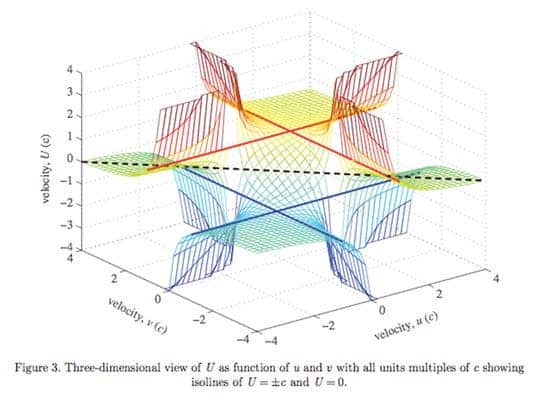
When last year scientists at CERN reported how neutrinos traveled a few tens of nanoseconds faster than the speed of light, the whole scientific community was left in shock, since it defied even the most elemental restriction of modern-day physics, a cornerstone without which physicists would have to rebuild the Standard Model. Still, some researchers, even after the whole event was disproved on account of a measurement glitch, were intrigued about the possibility of traveling at faster than light speeds; a range of “what ifs” surfaces. Two researchers at the University of Adelaide sought to find out what would happen to Einstein’s special relativity theory if it wasn’t limited by the speed of light, and mathematically described their findings. Apparently, in an environment where velocities greater than the speed of light exist, the laws of physics are dramatically altered.
Einstein’s special relativity theory, first pronounced in 1905, states that speed is relative. A moving observer will register an object’s velocity with a different value than that registered by a stationary observer. Also, special relativity postulates that as your travel with a higher velocity, time dilation occurs. Remember the famous twin paradox? One twin stays on Earth, while the other orbits the planet in spacecraft. After many years, the twin from Earth would have aged more.
Special relativity, however, limits the relative velocity of two objects (A and B) when their speeds approach that of light. Apart from the Newtonian limit, velocities are not additive quantities, so the differential velocity between A and B is not equal to their relative velocity and particularly has a smaller absolute value. However, Professor Jim Hill and Dr Barry Cox in the University’s School of Mathematical Sciences have developed new formulas that allow for travel beyond this limit. Of course, these formulas aren’t practical in the world, but provide an interesting view to a world where faster than light speeds are possible.
“Since the introduction of special relativity there has been much speculation as to whether or not it might be possible to travel faster than the speed of light, noting that there is no substantial evidence to suggest that this is presently feasible with any existing transportation mechanisms,” said Professor Hill.
“Our approach is a natural and logical extension of the Einstein Theory of Special Relativity, and produces anticipated formulae without the need for imaginary numbers or complicated physics,” says Professor Hill.
Their formulas extend special relativity to a situation where the relative velocity can be infinite and can be used to describe motion at speeds faster than light. In this new, imaginary world, the laws of physics are sensibly different, like one might expect. For instance, if a spaceship were to travel at ever-increasing, faster than light velocity, it would lose more and more mass, until at infinite velocity, its mass becomes zero.
“We are mathematicians, not physicists, so we’ve approached this problem from a theoretical mathematical perspective,” said Dr Cox. “Should it, however, be proven that motion faster than light is possible, then that would be game changing.
“Our paper doesn’t try and explain how this could be achieved, just how equations of motion might operate in such regimes.”
Both Cox and Hill have confidence in human ingenuity to surpass the light barrier, as many other breakthroughs managed to overcome other popular beliefs. If this will ever happen, indeed only time will tell. The findings were reported in the journal Proceedings of the Royal Society A: Mathematical and Physical Sciences.






